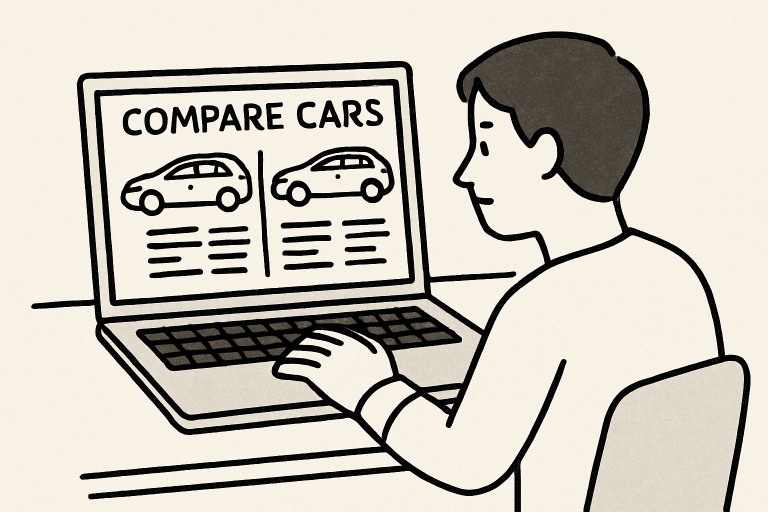The car shopping process is complex due to market trends, rising costs, and a mix of gas, hybrid, and electric options. Smart shoppers must consider long-term expenses, incentives, and timing to maximize value. Careful planning and research help avoid common pitfalls and focus on vehicles that match lifestyle and budget. Comparing financing offers and safety features ensures practical and rewarding choices.
Why Shopping for a New Car Is Different Now
Thanks to digital advancements and evolving consumer expectations, the way people buy new cars has transformed. Today’s buyers can conduct most of their research online, comparing models, reading reviews, and getting upfront pricing from the comfort of home. Virtual showrooms, advanced comparison tools, and detailed vehicle histories now make it easier than ever to shop confidently and efficiently. If you’re beginning your search and want to see the latest models and inventory, learn more about what’s available, and get a feel for current market trends.
While local dealership visits are still useful, online resources offer more options. Buyers can compare thousands of vehicles nationally, track prices, and access data that used to take hours. Reliable info replaces guesswork, and connecting directly with dealers saves time. This shift increases choices but also adds complexity, requiring careful research to avoid overload.
Setting a Budget and Identifying Priorities
Before choosing a vehicle, set a budget by considering total costs like sales tax, registration, insurance, and maintenance. Stick to a monthly payment limit and focus on essentials such as fuel efficiency, driver aids, or all-weather features to avoid costly impulse buys. Separating must-haves from nice-to-haves, like safety systems or cargo space, helps find a vehicle that fits your lifestyle, keeping expectations clear.
Making the Most of Online Tools and Comparisons
The internet is a car shopper’s best resource, with sites like Kelley Blue Book and Edmunds providing market values, reliability scores, and cost breakdowns. Use these tools to compare specs, read reviews, and track long-term trends. Consumer Reports says over 85% of Americans start their search online, showing digital research. Exploring multiple platforms reveals rebates, incentives, and dealer promos, including trending models and price drops. Digital resources help you approach dealerships informed, boosting negotiation power.

Test Driving: Virtual and In-Person Options
Test driving is crucial for evaluating a car’s handling, comfort, and convenience. The market now offers on-site and virtual experiences, with dealerships often delivering vehicles to customers for extended drives. Virtual tours provide immersive walkthroughs of features, reducing stress and making it easier to compare options before deciding. Focus on factors like seat comfort, visibility, infotainment usability, and handling of familiar routes and tight parking spaces. Note noise levels, ride quality, and adjustability. The right fit should complement your lifestyle, not just impress on a spec sheet.
Negotiating Your Best Deal
Despite increased transparency in pricing, there’s still room to negotiate on trade-ins, dealer extras, and sometimes price, especially if you come armed with competitive quotes. Consider requesting itemized breakdowns of all fees and comparing several offers. With many deals now initiated through email or chat, negotiations are less intimidating and more convenient. Staying patient, courteous, and informed turns negotiation into a productive conversation instead of a stressful ordeal.
Financing and Leasing: Vital Considerations
Choosing between financing and leasing hinges on your driving habits, financial goals, and long-term plans. Before heading to the dealership, shop for financing from banks, credit unions, and online lenders. Evaluate the total loan cost, factoring in interest rates and the term length—not just the monthly payment. Leasing may appeal if you want a new car every few years, but remember to consider mileage limits, potential wear-and-tear charges, and end-of-lease options. Utilizing pre-approval puts you in a stronger negotiating position, no matter which path you take.
Certified Pre-Owned and Alternative Ownership Models
Certified pre-owned (CPO) vehicles bridge the gap between new and used, offering modern features, reduced depreciation, and manufacturer-backed warranties. A CPO car often undergoes extensive inspections, providing confidence while saving thousands over new. Alternatively, some buyers are exploring subscription-based models or flexible short-term leases, which offer new vehicles with insurance and maintenance bundled in. As car buying evolves, these alternatives attract attention from drivers seeking flexibility and convenience.
Summary: Putting It All Together
Shopping for a new car no longer has to be a daunting process. You can uncover excellent vehicles that match your needs by setting a clear budget, relying on trusted online resources, and taking full advantage of technology and virtual options. Approach each step—comparison, test drives, negotiation, and financing—with informed confidence. Whether you opt for a brand-new model, a certified pre-owned vehicle, or an alternative ownership plan, thoughtful preparation ensures you secure the right car at the right price for your unique situation.

